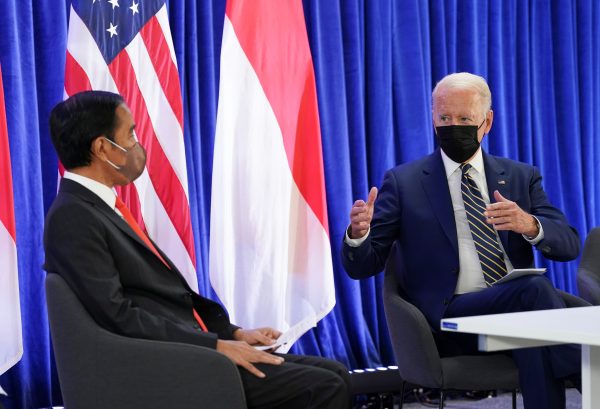The steady success that has come from taking time to forge consensus and helping the laggards along stands in marked contrast to the retreat to protectionism in the United States and the fracture of the European Union with Brexit.
ASEAN has managed to bring its free trade partners together into an East Asia-wide economic agreement. The conclusion of the Regional Comprehensive Economic Partnership (RCEP) in November 2019 at a time of global turbulence was a huge achievement of strategic significance in pushing back against the threats to the multilateral system. RCEP is the world’s largest regional pact in terms of GDP, trade volume, foreign direct investment and population. New market openings and rules are locked in.
Bringing RCEP into force is not the end point, but the start of an elevated process of regional integration for ASEAN and its partners.
Today we launch our next issue of East Asia Forum Quarterly on ‘East Asia’s economic agreement’, which looks at RCEP’s impact going forward. Democracy and growth in Asia, Nepal’s strategic position in Asian geopolitics, and living with COVID-19 in Southeast Asia are the highlights in this EAFQ’s Asian Review section.
The next phase of Asian economic cooperation is deepening integration and RCEP provides a framework for dealing with issues beyond those already negotiated. There’s a significant security payoff from the agreement too, by wrapping major economies in more interdependence. In Southeast Asia economic integration is a valued source of security.
RCEP provides another framework for Southeast Asia to manage relations with China. It can do the same for Australia. How RCEP engages the United States will matter, as will the US response, to managing economic and political relations across the Pacific.
RCEP’s anchor in ASEAN institutional arrangements is also important as insulation for the agreement from today’s geopolitical competition across the region, especially given that China is a participant in the agreement together with Japan and South Korea. The pressure on US allies and partners to decouple their trade and especially technology from China has grown.
China’s use of economic coercion, particularly in its regional neighbourhood — earlier against Japan and South Korea and recently blatantly against Australia — has aggravated uncertainties about the nature of its rise. There is a growing attenuation of trust between China and the United States. The multilateralism that helps to restrain and shape great power settlements — essential to East Asia’s prosperity and security — is harder to sustain.
The RCEP economic settlement is an opportunity to bridge these fractures and to undergird political confidence and trust, a much underestimated element in realising international trade and economic potential. The institutional arrangements in ASEAN that will power RCEP economic cooperation can reinforce political trust and confidence in deeper economic ties.
This will not happen automatically without significant regional political will.
Buttressing the multilateral economic order to create space for China, the United States and other large rising economies in South and Southeast Asia is the priority and a critical element of regional security.
RCEP provides a powerful region-wide organisational framework for continuing the unfinished business of achieving security for the peoples of Asia through economic integration and development.
India walked away from the RCEP deal at the last moment, but proactively engaging New Delhi, perhaps eventually as a member, is important for trans-Asian economic integration. The low-cost manufacturing that brought prosperity to China cannot be absorbed by Southeast Asia alone and is an opportunity for India and its neighbours too. Bangladesh has already signalled its willingness to join the trade pact, offering hope that, despite India’s reluctance, RCEP could help entwine South Asia — historically a laggard in economic integration — into the dynamic East Asian economy.
In our lead article this week from EAFQ, Mari Pangestu and Lili Yan Ing argue that RCEP and the G20 have key roles to play in recovery of the global economy and navigating geopolitical conflict. Both RCEP and the G20 are platforms that ‘have the capacity to address four big trends — global value chains, digitalisation, climate change and pushback against globalisation and protectionism — which have been reinforced by the COVID-19 pandemic and to which countries must now adapt’.
‘Trade continues to be an engine of growth and is playing a primary role in the recovery spurred by global value chains. In January 2022, the value of total trade in goods was 25 per cent higher than pre-pandemic levels, largely led by growth in electrical and electronic equipment, medical equipment and minerals’, say Pangestu and Ing. ‘Yet trade recovery has been uneven and faces new uncertainties given developments around the world’.
‘Uncertainties caused by the war in Ukraine are another blow to open trade’, according to Pangestu and Ing. ‘Global poverty has been cut by more than two-thirds since 1990 as developing countries doubled their share of global exports. Yet reforms for open trade and investment must be complemented by policies to ensure that gains are more widely distributed’.
RCEP’s institutionalisation can help manage the dangers that now loom for the multilateral trading system. It is positioned to encourage the development of Asia-wide positions and strategies that help defend the system and influence positively the direction of global trade and commercial policy, enabling ASEAN and its East Asian partners to better navigate and manage the challenges to regional prosperity and stability.
With Indonesia in the RCEP driver’s seat, and this year at the helm of the G20, there’s an extraordinary opportunity to make trade work again for development and contribute to a resilient and sustainable future.
The EAF Editorial Board is located in the Crawford School of Public Policy, College of Asia and the Pacific, The Australian National University.

